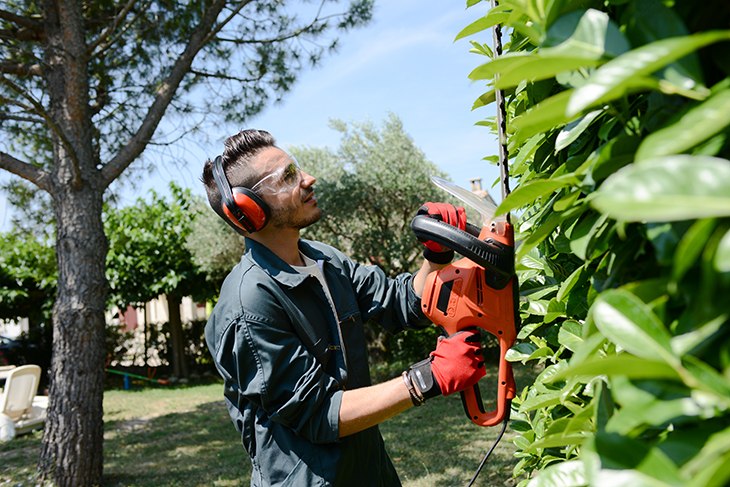Spring Safety for Landscapers and Tree Care Workers
Happy Spring! In many areas of the U.S., the weather is getting nicer, which means that landscapers and tree care workers are entering their busy season. According to OSHA, many hazards in the tree care and landscaping industry are potentially fatal, but effective management of worker safety and health protection is a decisive factor in reducing the extent and the severity of work-related injuries and illnesses.
Landscaping and horticultural service workers are at risk of injury from a wide variety of potential work hazards, including chemical exposure, noise, machinery, lifting, construction, and weather. It’s important for all workers to be aware of any workplace hazards and be properly trained on preventing these hazards. Below are some potential hazards identified by OSHA and possible solutions to specific activities within the landscape and horticultural services industry:
PLANTING - TREES, SHRUBS, LAWN
Primary hazards include:
- Lifting-related injuries
- Heat stress
- Cuts and hand injuries
- Slips, trips, and falls
- Vehicle accidents
Solutions:
- Get help lifting / lift safely / stretch
- Drink enough water / pay attention to body signals / take breaks / work and rest in shade when possible
- Wear gloves / inspect tools and equipment before use
- Keep job site clean
- Train and certify drivers
LAWN AND LANDSCAPE MAINTENANCE
Primary hazards include:
- Cuts and amputations
- Hand injuries
- Chemical exposure
- Eye injury
- Hearing loss
- Ergonomics
- Vehicle accidents
Solutions:
- Keep clear of rotating mower and brush-cutting blades
- Wear gloves
- Read and obey Safety Data Sheets (SDSs) information / implement effective hazard communication program that includes employee training
- Wear protective goggles when using blowers
- Wear ear protection when using power equipment
- Maintain comfortable mower settings / use safe-lifting techniques
- Train drivers and include information on the dangers of riding mowers and roll-overs
TREE CARE
Primary hazards include:
- Struck by
- Cuts and amputations
- Eye damage
- Ear damage
- Electrocution
- Slips, trips, and falls
Solutions:
- Use PPE (e.g., hard hat) / know the drop zone
- Train safe chainsaw use and wear chaps
- Wear safety goggles
- Wear ear protection for chipping/chainsaw
- Comply with the 10-foot power line clearance rule (10 feet + 4 inches for every 10kV over 50 kV)
- Use property tree tie-in
To learn more about the resources OSHA has available to keep landscapers and tree care workers safe, visit: https://www.osha.gov/landscaping
HazTek Inc. is a leading provider of comprehensive safety management services designed to protect workers by enhancing workplace safety. For additional information or to learn more about how HazTek can help, please contact us at 888.842.9835, email us at info@haztekinc.com, or visit our website at www.haztekinc.com
Credit: OSHA
